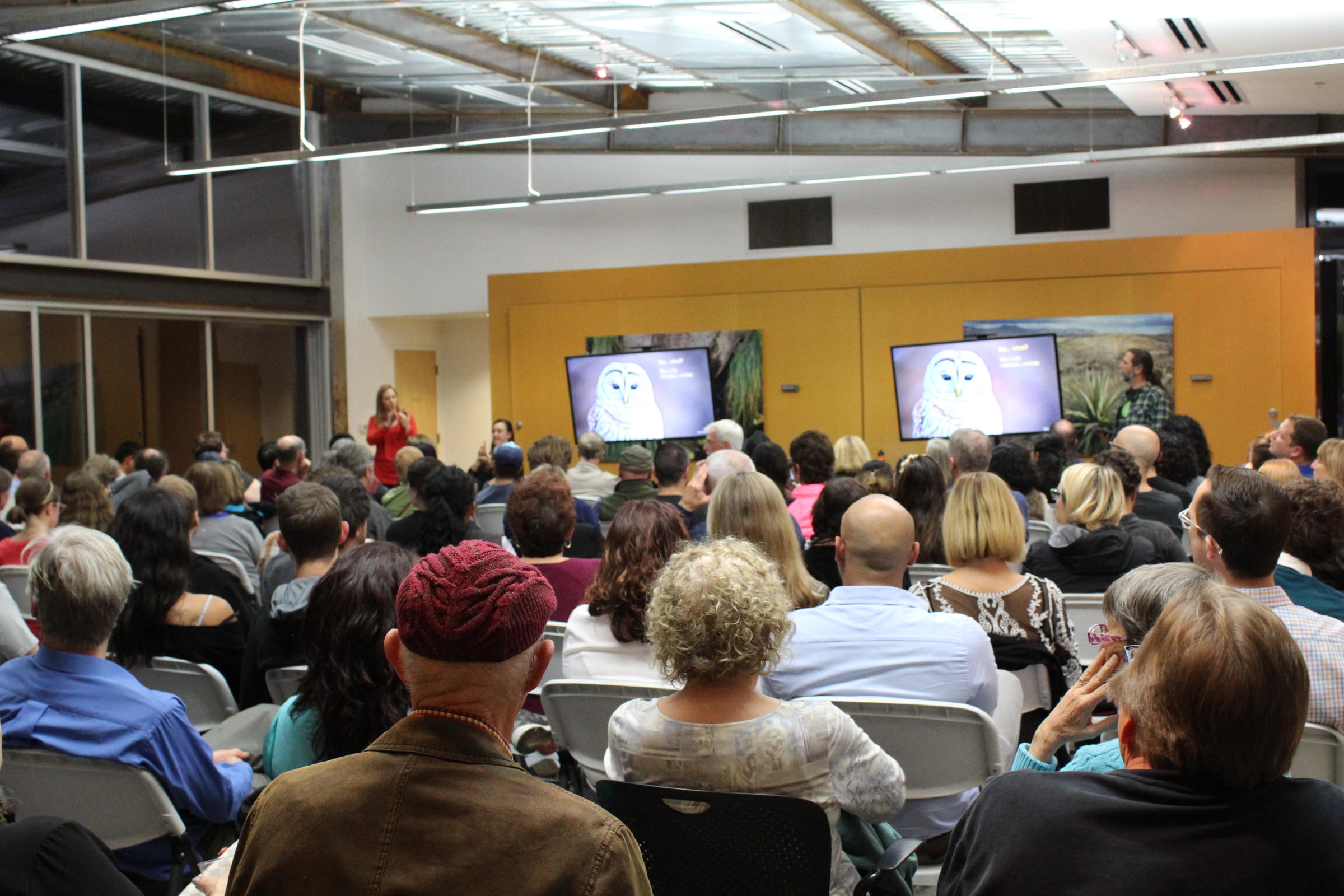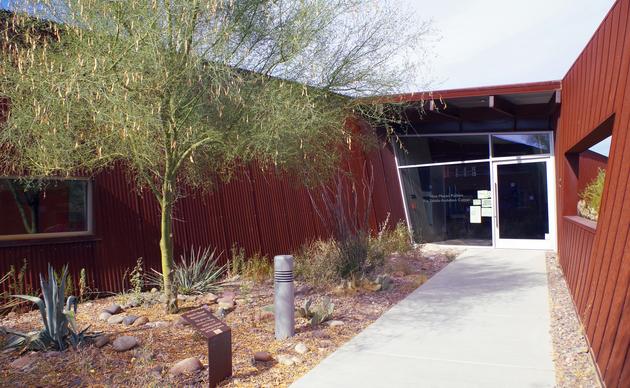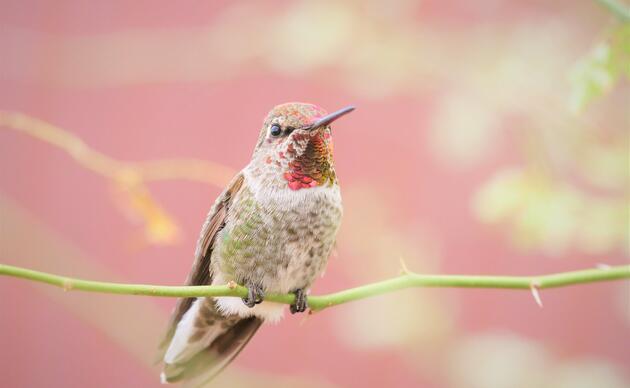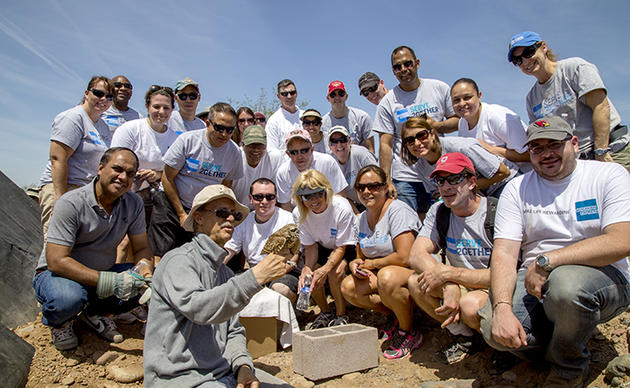By Mike Clancy
March 2018
If you’ve volunteered for Audubon Arizona, staffing a table at an outdoor festival, you may be familiar with the spinning wheel game that matches animals with manmade items, like the shoes with toes that resemble a gecko’s, or the folding outdoor chair that could have been inspired by a human skeleton.
At Birds and Beer this month, two experts took those matches to a deeper level of understanding.
Michelle Fehler of Arizona State University and Joe Zazzera of the company Plant Solutions are specialists in biomimicry, a term created just 20 years ago to refer to manufactured items that derive ideas from nature.
The key question appears to be how. How does nature do what it can do, and how can human beings replicate that?
“There’s a recipe we can learn from,” Zazzera said.
Before another full house at the February gathering, sponsored by American Vision Windows, The pair listed several examples:
- When the new Japanese bullet train was initiated, it created a loud sound, a boom, when it entered and exited tunnels. The answer was to emulate the kingfisher, a bird that dives into water to capture prey while barely making a ripple on the surface. A new nose was attached to the train that looked like a kingfisher’s beak. Not only did the aerodynamic shape stop the noise, it also saved 30 percent in energy use.
- A woodpecker, including our own Gila woodpecker, will pound on something 80 million times in its life. How does it avoid concussions? Its tongue wraps behind its brain and presses on the jugular vein, keeping blood in the brain to act as a shock absorber. Now, researchers are trying to replicate the action to protect the brains of football players and others who wear helmets.
- The hummingbird, with its figure 8 wing motion, has inspired research into wind turbines to make them more efficient. Likewise, the owl, with its silent flight caused by serrations and fringes on the edges of its wings, have helped quiet the turbines.
It’s not just birds that inventors learn from. But sometimes birds are the beneficiaries.
The golden orb weaver spider, known for huge, unruly webs, actually can weave ultraviolet threads of silk. These threads can show birds where the web is, and the birds can avoid getting entangled.
Birds and Beer is a monthly social hour and talk held every third Thursday at Audubon, 3131 S. Central Ave. in Phoenix. March will feature Cindy Marple talking about seabirds.
Arizona Wilderness Brewing will, as usual, provide several beers for tasting. Chris Chappell, social media coordinator for the brewery, announced that it is making a new beer in conjunction with Audubon Arizona, to be called Hummingbird Springs Saison. It will be released later in the spring, so stay tuned to Audubon's and Arizona Wilderness Brewing Co.'s social media for details.







